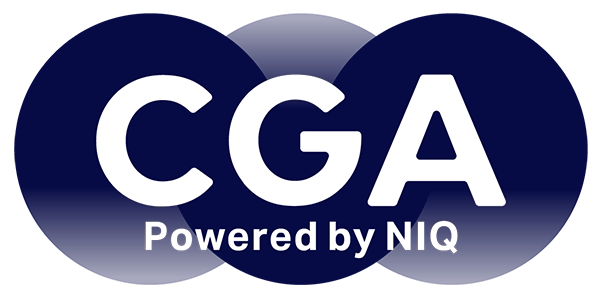CGA’s Insight 2018 conference analysed the latest big trends and developments in marketing across the eating and drinking-out sectors. Here are just ten of the many lessons from the experts

1. People are still going out—and they have more choice than ever
There’s been some gloomy news about restaurant closures and CVAs in early 2018, but CGA’s data shows that the frequency of out-of-home eating and drinking is holding up. “The good news is that consumers are still going out,” CGA’s Peter Martin told Insight 2018.
Those consumers have never had greater variety to choose from, he added. CGA and AlixPartners’ Market Growth Monitor shows that Britain had nearly 4,000 more restaurants at the end of 2017 than it did five years earlier. “Consumers are more promiscuous than ever… they’ve always got somewhere new to go,” Martin said. Much of the choice is coming from fresh entrants to casual dining, who are disrupting older brands. “It’s incredibly dynamic… there’s always someone coming up on the outside to challenge you.”
2. Brands need to understand the core customers
CGA’s Rachel Weller pointed out that 31% of consumers make up 70% of eating and drinking out visits now—and meeting their needs is vital. “There’s never been a more important time to understand those 31%.”
CGA’s consumer segmentation tools can help, by breaking people down into ten key groups according to their behaviours rather than blunt demographics. “We wanted to break out of generational moulds and move away from lumping millennials into one group and assuming they all behave the same way… they don’t.” Understanding big-spending and influential groups like ‘Trending Tastemakers’ and ‘Business Class Seekers’ can help to optimise food offers, drinks ranges, new openings and more, Weller said.
3. Experience and quality are key
As Peter Martin put it: “It’s all about experience now—it’s not just the food and drink.” The Alchemist’s Simon Potts backed up that point at Insight 2018, highlighting the importance of drama and presentation in cocktail service—especially to the Instagram generation. “The theatre is important… what you’re snapping on your phone and what you’re telling your friends the next day.”
But John Gyngell of the North Bar group said quality remained at least as important as experience. “You’ve got to get quality nailed before you do anything else. You can change, adapt and innovate, but if you haven’t got that quality of product and service, it all falls down.”
4. Drinks ranges should balance new and old
Potts and Gyngell also talked about the need to keep innovating in drinks and bars. The Alchemist is pushing into new dayparts and segments like breakfast and non-alcoholic cocktails, Potts said. “You can’t stand still… you’ve got to keep progressive in your thinking.”
Gyngell agreed about the need to stay on top of trends—which in craft beer will soon include sours, low-ABVs and provenance, he thought. But bars need to remember that customers will always have their tried and trusted favourites, he added. “Experimentation is driving the market, but the core brands have equal importance.”
5. Suppliers can really help operators
Consumers’ drinks tastes are changing fast, and suppliers often have data that can help brands understand them. That was the message from Claire Oliver, who gave Insight 2018 a case study of how Red Bull’s image consumption has evolved, from late night to daytime occasions and dining.
Suppliers and operators can work together on market insights, thought leadership and content, she said. That might mean collaborating to optimise range, setting joint targets, improving frontline training or incentivising good sales performance.
6. Feedback needs to focus on the frontline
A Conference panel of marketing leaders discussed the importance of feedback—and in particular how it needs to link closely to operations and business metrics. The Casual Dining Group’s Celia Pronto said head office’s job was to sift through complex data for the key messages that can help restaurant teams perform better. “Our guys on the ground have a lot to deal with, so we try to simplify feedback as much as we can… distil it down to the two or three data points that matter.” Guest satisfaction scores and league tables of performance are popular among staff, she said.
Hawksmoor’s Rosie Mira added that it was important to get feedback from staff as well as to them. Polls, focus groups and the Workplace platform all help central teams understand their workforce better.
7. Social media is still crucial
The Conference came hot on the heels of JD Wetherspoon’s decision to abandon its social media channels. But the marketers panel agreed that engagement with Facebook, Twitter, Instagram and other platforms remained vital. Claudia Nicholls-Magielsen explained that they help Weight Watchers communicate its evolving brand messages, and Pronto said it was important for operators to be active wherever their customers choose to be—which increasingly means social media. “You’re better off being part of the conversation than not… [but] you’ve got to engage in the right way.”
8 Simplicity and value sustain brand momentum

CGA’s Karl Chessell and Stone & River’s Alex Doman used Insight 2018 to launch the joint Brand Momentum Report—a new index of businesses that are best harnessing consumer awareness, opinions and loyalty to build momentum in different sectors. Rounding up the findings, Chessell suggested that brands including Costa, JD Wetherspoon, Stonehouse, Greggs and Miller & Carter are among those with the most impetus at the moment.
What these names have in common is that they are easily understood, Doman said. “Brands that have a clear ‘why’ and can cut through the noise are the ones with the most momentum.” Value and convenience are important too—as is appealing to the ‘silver’ generation. “It’s notable that many of the brands with the most momentum are focused on the over-55s.”
9. Voice-led ordering is coming
Insight 2018’s ‘Cultural Disruptors’ session cast an eye over the technological change sweeping the sector, and US-based tech investor Michael Atkinson predicted that voice-led ordering platforms like Orderscape were set to roll out. People are becoming accustomed to engaging with ‘bots’, he said, and like the idea of a virtual “food concierge”.
Other tech that is likely to stick includes apps that enable payment—something now offered by Wagamama. Andre Johnstone from the brand said it met a pressing consumer need. “We started to realise that people don’t want the fuss of finding cards and waiting—they just want to walk out when they’ve finished.”
10. Delivery is a big deal—but challenging
Johnstone said delivery was generating good sales for Wagamama, but that the company was constantly striving to do it better. “Delivery’s going well, and it’s not going away… but we need to balance it with the demands of our restaurant operations.”
His fellow panellist, Jamie Bolding of Jungle Creations, said his company was moving into the delivery of food that has been featured on its hugely popular social media channels. But remote ordering and delivery can never completely replace face-to-face contact, he added, and Jungle Creations sees the importance of offline events as well as social media. “The human element is still very important… the only way you deepen relationships is through genuine interaction.”
CGA’s Insight 2018 was supported by CPL Online, Fishbowl, Odgers Berndtson, Red Bull, Yumpingo and Zonal.




